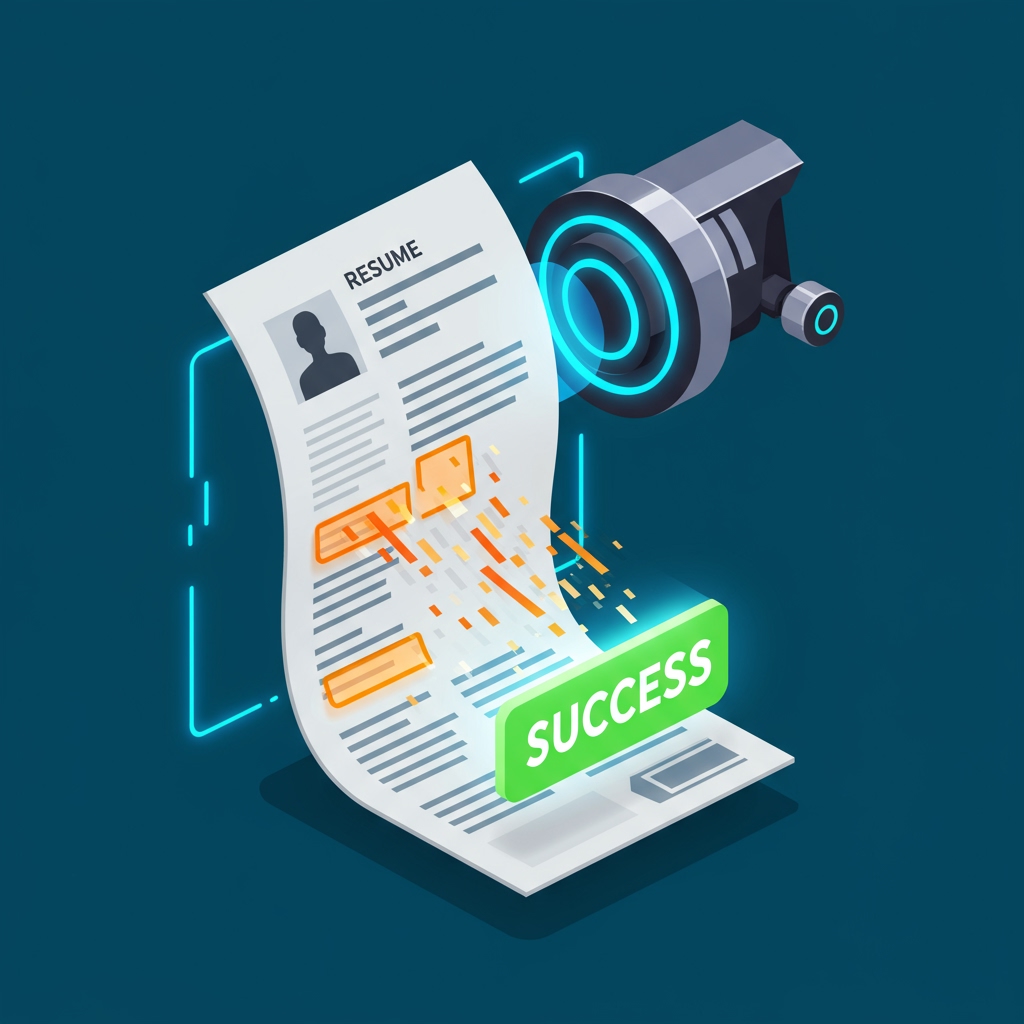How to Optimize Your Resume for ATS in 2025: A Step-by-Step Guide


Sneha Satapathy
How to Optimize Your Resume for ATS in 2025: A Step-by-Step Guide
In today's competitive job market, getting your resume seen by human eyes is the first major hurdle. Applicant Tracking Systems (ATS) are the gatekeepers for over 98% of large companies and increasingly for smaller ones too. If your resume isn't optimized for these systems, it might never reach a hiring manager.
But don't worry! Optimizing your resume for ATS isn't rocket science. It's about understanding how these systems work and formatting your document accordingly. This guide will walk you through everything you need to know to create an ATS resume that stands out in 2025.
What is an ATS and Why Does it Matter?
An ATS is a software application that manages the recruitment process. When you apply online, your resume is uploaded into this database. The ATS then scans, parses, and ranks resumes based on keywords, formatting, and other criteria set by the hiring manager.
The goal of an ATS is to filter out unsuitable candidates and present a manageable list of qualified applicants to recruiters. For you, this means your resume needs to be easily readable by the software before it's readable by a human. This is where resume optimization comes in.
Key Elements ATS Scanners Look For
ATS software primarily focuses on:
- Keywords: Matching terms from the job description to your resume content.
- Formatting: The structure and layout of your document.
- Sections: Standard resume sections (Experience, Education, Skills).
- Readability: How easily the software can parse the text.
Step-by-Step ATS Resume Optimization for 2025
Follow these steps to transform your resume into an ATS-friendly document:
Step 1: Choose the Right File Format
Always check the job application instructions. If they specify a format (like .docx or .pdf), use that. PDF is generally preferred as it maintains formatting, but some older ATS might struggle with complex PDFs. When in doubt, a simple .docx is usually the safest bet unless PDF is explicitly requested.
Step 2: Use a Clean, Simple Layout
Fancy graphics, text boxes, headers/footers, charts, or unusual fonts can confuse an ATS resume scanner. Stick to a clean, chronological or combination format. Use standard fonts like Arial, Calibri, or Times New Roman. Ensure clear headings for sections.
Step 3: Integrate Relevant Keywords Naturally
This is perhaps the most crucial step. Carefully read the job description and identify key skills, qualifications, and responsibilities. These are your target keywords.
- Identify Keywords: List the exact phrases used in the job posting (e.g., "project management," "customer relationship management," "SQL," "cross-functional teams").
- Place Keywords Strategically: Weave these keywords naturally into your Experience section bullet points, Summary/Objective, and Skills section. Don't just list them; show how you used them.
- Use Variations: Include synonyms or related terms where appropriate, but prioritize the exact phrasing from the job description.
Step 4: Standardize Section Headings
Use common headings like "Experience," "Education," "Skills," "Summary," "Awards," etc. Avoid creative titles like "My Background" or "What I've Done" as the ATS might not recognize them.
Step 5: List Experience Chronologically or Functionally (Clearly Labeled)
Most ATS are designed to read chronological work history easily. Ensure your job titles, company names, and dates are clear and consistent.
Step 6: Optimize the Skills Section
Create a dedicated resume skills section. Break down technical skills into specific categories (e.g., Programming Languages: Python, Java; Software: Salesforce, HubSpot; Tools: JIRA, Asana). List hard skills clearly. While soft skills are important, they are often best demonstrated in your experience bullet points rather than just listed here.
Step 7: Proofread Meticulously
Typos and grammatical errors don't just look unprofessional to humans; they can also interfere with an ATS parsing your information correctly, especially keywords.
Step 8: Test Your Resume
Before submitting, consider using an online resume scanner or text parser tool to see how software reads your resume. Some resume optimization tools can give you a score based on how well it aligns with a specific job description.

Common ATS Mistakes to Avoid
- Using graphics, tables, or charts.
- Putting critical information in headers, footers, or sidebars.
- Using obscure abbreviations or jargon.
- Keyword stuffing (listing keywords unnaturally).
- Saving in an unsupported file format.
- Using complex or unusual fonts.
How Prepzo's Resume Builder Helps
Prepzo's Resume Builder is designed with ATS compatibility in mind. Our templates use clean, simple layouts that are easily readable by scanners. The platform also helps you structure your sections correctly and prompts you to include essential information in an ATS-friendly format, taking much of the guesswork out of the process.
Conclusion
Optimizing your resume for ATS is a critical step in your 2025 job search strategy. By focusing on clean formatting, strategic keyword placement, and standard section headings, you significantly increase the chances of your application getting through the initial screening. Use this step-by-step guide and leverage tools like Prepzo's Resume Builder to create an ATS resume that opens doors to interview opportunities.

Sneha Satapathy
Related Articles

Career Path Planning: Mapping Your Next Five Years
A comprehensive guide for graduates on neuroplasticity deliberate practice AI integration and building extraordinary careers through growth mindset and strategic action.
Sneha Satapathy

How to Write an Impactful Engineering Resume with Metrics
Learn how to craft a results-driven engineering resume using measurable metrics, with real examples and tools for every specialty.
Sneha Satapathy

How Elite Engineers Land AI Jobs in 2025
The AI-driven job market demands more than just a CV. Discover how elite engineers are securing jobs through LinkedIn optimization, strategic networking, and project-led job hunting.
Sneha Satapathy